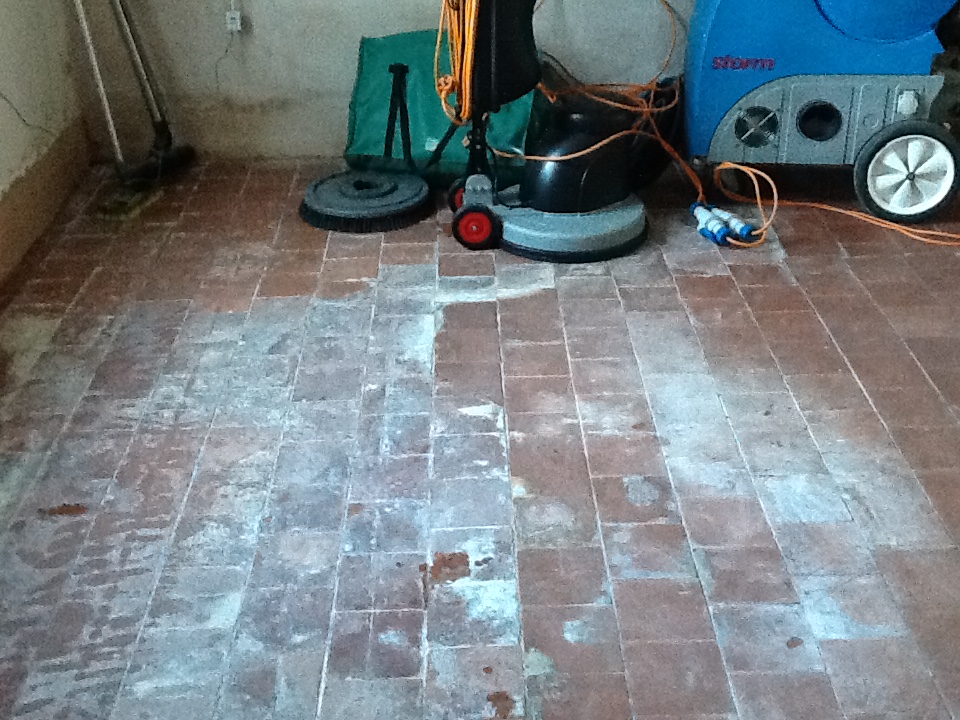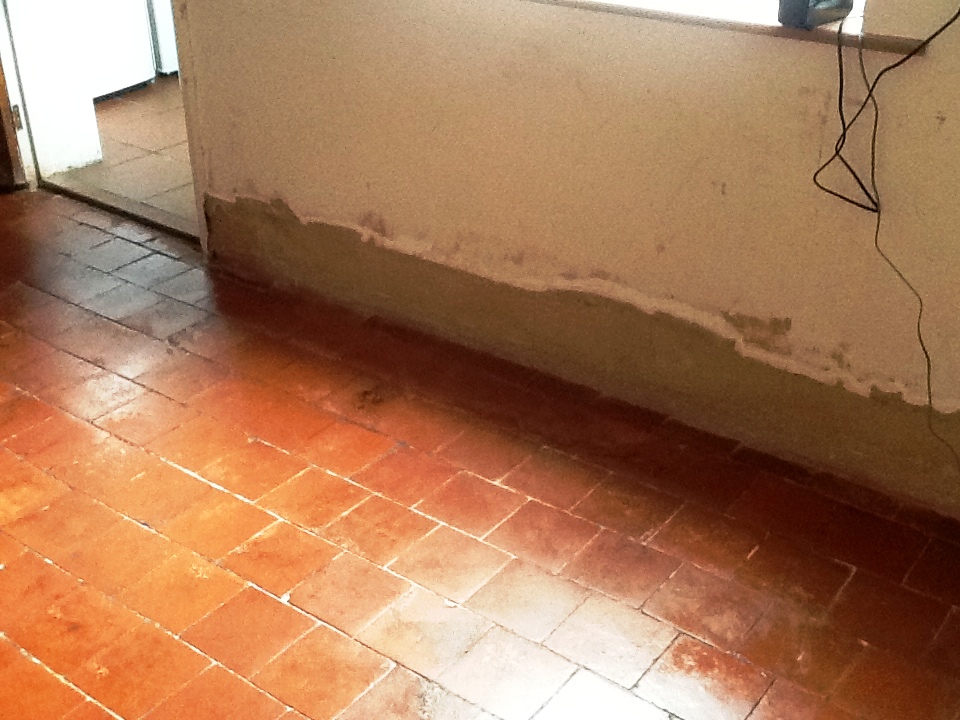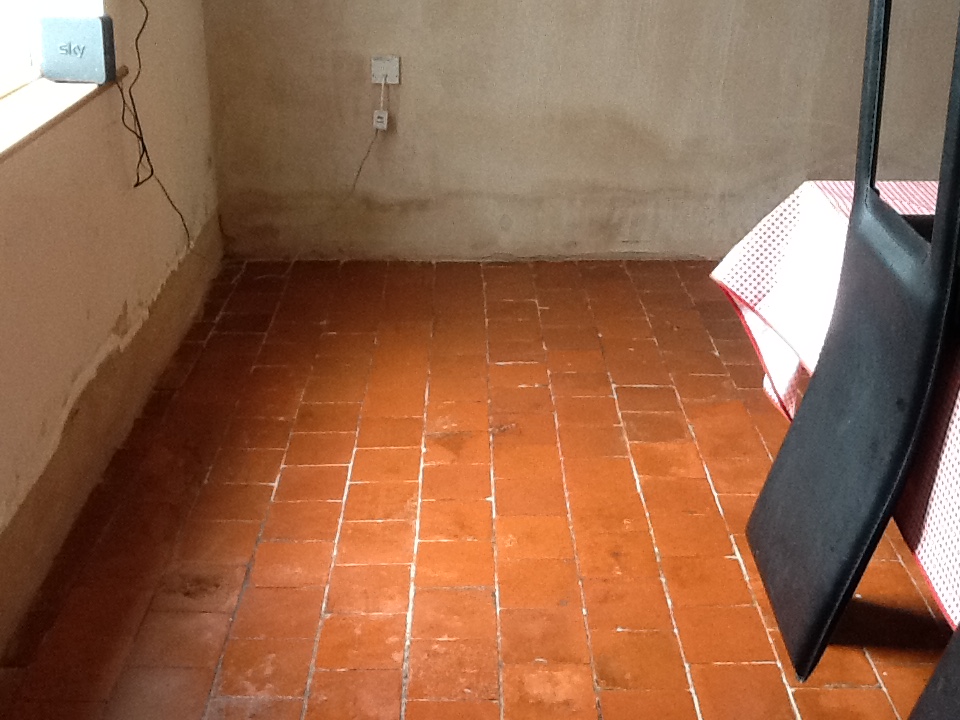This red Quarry tiled floor was in the dining room of a house in the East Northamptonshire market town of Higham Ferrers. Despite being an original feature of the property, the floor had never been taken care of and looked to be completely beyond salvation and what must be the worst condition I have seen in a long time.

When I first inspected the floor it became very quickly clear that it was suffering from severe damp problems, covering roughly two thirds of the entire surface area. I took damp meter readings and discovered that the floor was saturated as there was no damp proof course installed. This problem was compounded by staining from the glue residue used to hold down the linoleum which previously covered the tiles. But while some floors look beyond salvation, I was certain I could restore this one to an acceptable appearance.
A hallway in the property had the same Quarry tiles, but these had been painted with a red tile paint at some point in the past, which itself had worn off in the main traffic areas. These tiles had no damp problems and so it would just be a case of removing the rest of the paint and providing a thorough cleaning before sealing.

The customer was also keen that the dining room be restored as near as possible to the hallway tiles to try and achieve a uniform finish. I did inform the customer that due to the vast difference in condition this would be a challenge but I would do my best. A quote was given and work was booked in at the customer’s convenience.
Cleaning Extremely Dirty Quarry Tiles
Before beginning the restoration, I carried out a patch test to see which products would achieve the best results on the tiles. After vacuuming and mopping the floor to remove the immediate layers of muck, I decided my best course of action would be to use the heavy duty stripper, Tile Doctor Remove & Go.
Working in four separate sections, I applied the product then scrubbed it using a black stripping pad to a rotary machine. Remove & Go is designed to break down old sealers, paints and glues, making it an ideal product for use in this particular situation. This area was then rinsed off with a wet-vac machine and the process was repeated on the rest of the floor.
I then inspected the floor and noticed a few shiny patches where the old sealer hadn’t been fully removed, so I tackled these stubborn areas by hand with a second application of Remove & Go. A final rinse was given to the whole floor to make sure no excess cleaning products remained.
Sealing Quarry Tiles
After completing the cleaning process and removing as much water as possible using a wet vacuum, I installed a dehumidifier and left the tiles to dry for an entire month. Upon my return to the property I took damp meter readings to ensure the tiles were fully dry prior to the application of the sealer. This is crucial as excess moisture can cloud the sealer, rendering it less effective at protecting the stone.
I opted to use Tile Doctor Colour Grow to seal the floor primarily because is fully breathable and therefore ideal for floors that are prone to damp problems. It has the added bonus of being a colour intensifying sealer that really enhanced the natural reddish shades in the Quarry.

As the pictures show, there was a vast improvement in the floor and the customer was pleased with the results. It really goes to show that while a floor might look beyond salvation, wait can in fact be restored to an acceptable condition using the right methods and products. The customer was also given advice on maintenance of this type of floor to keep it looking its best for years to come.

Source: Quarry Tile Cleaning and Restoration Service in Northamptonshire
Tile Doctor have the products and training to handle a multitude of issues surrounding stone, tile and grout including grout cleaning and colouring.